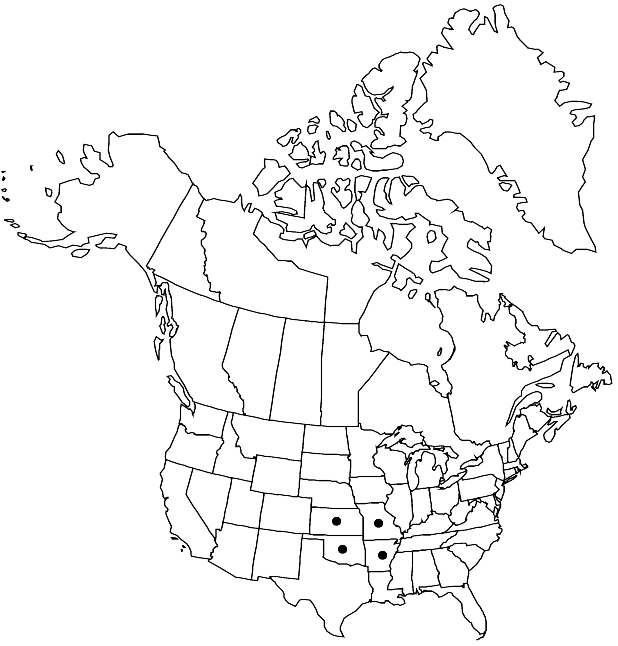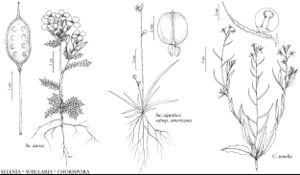Difference between revisions of "Selenia aurea"
J. Acad. Nat. Sci. Philadelphia 5: 132, plate 6. 1825.
FNA>Volume Importer |
imported>Volume Importer |
||
| Line 6: | Line 6: | ||
|place=5: 132, plate 6. 1825 | |place=5: 132, plate 6. 1825 | ||
|year=1825 | |year=1825 | ||
| + | }} | ||
| + | |special_status={{Treatment/ID/Special_status | ||
| + | |code=F | ||
| + | |label=Illustrated | ||
| + | }}{{Treatment/ID/Special_status | ||
| + | |code=E | ||
| + | |label=Endemic | ||
}} | }} | ||
|basionyms= | |basionyms= | ||
| Line 53: | Line 60: | ||
|publication title=J. Acad. Nat. Sci. Philadelphia | |publication title=J. Acad. Nat. Sci. Philadelphia | ||
|publication year=1825 | |publication year=1825 | ||
| − | |special status= | + | |special status=Illustrated;Endemic |
| − | |source xml=https:// | + | |source xml=https://bibilujan@bitbucket.org/aafc-mbb/fna-data-curation.git/src/bb6b7e3a7de7d3b7888a1ad48c7fd8f5c722d8d6/coarse_grained_fna_xml/V7/V7_793.xml |
|tribe=Brassicaceae tribe Cardamineae | |tribe=Brassicaceae tribe Cardamineae | ||
|genus=Selenia | |genus=Selenia | ||
Revision as of 00:00, 28 May 2020
Plants not winter annuals. Stems (simple or few to many from base), usually erect to ascending, rarely subdecumbent, (slender), (0.5–)0.8–2.7(–3.5) dm. Basal leaves not rosulate; petiole 0.5–1 cm; blade margins 1-pinnatisect, (1–)2.5–7(–10) cm; lobes (3–)6–12(–18) on each side, (smaller than terminal), linear to oblong or ovate, (1–)2–10 × 0.5–1(–2.5) mm, margins entire or coarsely dentate. Cauline leaves (and bracts) similar to basal, smaller distally. Fruiting pedicels from racemes, (6–)10–22(–30) mm, (slender). Flowers: sepals spreading to ascending, oblong-linear, (3.5–)5–7 × 1–1.5 mm, apex appendage not developed; petals spatulate, (8–)10–13 × 3–4.5 mm, apex rounded; median filament pairs 5–7(–8) mm, not dilated basally; anthers oblong, 1–1.5 mm; gynophore (0.5–)1–2(–5) mm, or, rarely, obsolete. Fruits usually oblong to elliptical, rarely suborbicular, usually latiseptate, rarely inflated, (0.5–)1–2.5(–3) cm × (3.5–)5–8(–11) mm, (not fleshy, thin-papery), base and apex acute; valves faintly reticulate-veined; replum flattened; septum complete or perforated; ovules (8–)10–20 per ovary; style 3–9(–12) mm, slender or flattened basally. Seeds 3–4 mm diam.; wing 0.5–1 mm. 2n = 46, 138.
Phenology: Flowering Mar–May.
Habitat: Sandy open grounds, barren rocky sandstone or clay, granite soil, rocky grounds, shale barren, open areas in mixed juniper and oak, chert barrens, pastures, sandstone glades, fields, rocky prairies
Elevation: 100-400 m
Distribution

Ark., Kans., Mo., Okla.
Discussion
Although R. C. Rollins (1993) and R. F. Martin (1940) suggested that Selenia aurea probably occurs in northeastern Texas, I have not seen any material from that state.
Selected References
None.
